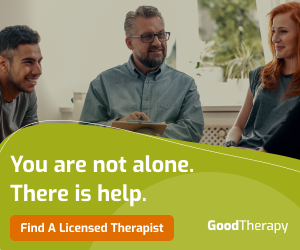-
 Navigating Relationships with Emotionally Immature Parents
Navigating Relationships with Emotionally Immature Parents
“Their main sources of anxiety are feeling guilty when they displease others and the fear of being exposed as imposters. Their biggest relationship downfall is being overly self-sacrificing ... Read More
-
 Is Summer Anxiety Real?
Is Summer Anxiety Real?
Summer is known to be a time of relaxation, vacations, and mood-lifting weather. But despite the leisurely pace of living, the season can also bring a sense of anxiety and stress, as routines ... Read More
-
 Divorce and Children: Fostering Self-Love and Affirmations
Divorce and Children: Fostering Self-Love and Affirmations
Divorce can be a deeply challenging and emotional time for both parents and children. As a professional counselor, I understand the importance of ensuring that children feel loved, secure, ... Read More
-
 Spiritual Intelligence: What is it and 4 approaches to cultivate it through psychotherapy
Spiritual Intelligence: What is it and 4 approaches to cultivate it through psychotherapy
You may be hearing increasing mentions of spiritual intelligence in the media, not least because there is a growing body of research pointing to how we can cultivate this mindset ... Read More
-
 Tips to Decrease Work Burnout During Summer
Tips to Decrease Work Burnout During Summer
Burnout can strike any time of the year, but it’s common for symptoms to set in during the summertime. That’s due to a few factors. Longer days, warmer weather and vacation anticipation ... Read More
-
 Pride Month: What Does Celebrating Pride Mean
Pride Month: What Does Celebrating Pride Mean
Pride has earned a permanent spot in corporations’ branding and social media presence starting in June. That certainly speaks to the success of hard-won cultural and legal battles over ... Read More
-
 Authenticity: on Inciting a Revolution in Your Soul
Authenticity: on Inciting a Revolution in Your Soul
When you live from your intuitive core, your belly, your heart, let your soul lead and spirit guide you, your words and actions will be naturally subversive. You will go to your edge. ... Read More
-
 Can I do Therapy and Juggle Work/Life Balance?
Can I do Therapy and Juggle Work/Life Balance?
Yes, 4 tips from a mental health therapist to get you started. Achieving a healthy balance between therapy and work/life responsibilities can be challenging, but it is possible. With ... Read More
-
 How Your Parental Expectations May Sabotage Your Relationship With Your Child
How Your Parental Expectations May Sabotage Your Relationship With Your Child
Close your eyes and think back to the day your child was born. Remember the moment your eyes locked with one another and the feeling of holding one of God’s greatest gifts for the ... Read More
-
 The Stigma Around Men’s Mental Health
The Stigma Around Men’s Mental Health
June is a celebratory month for many reasons, most notably the start of summertime, but many don’t realize this time of year is also Men’s Mental Health Month. While discussing such ... Read More
-
 Quick Ways to Manage Screen Compulsion
Quick Ways to Manage Screen Compulsion
According to William G Allyn, Professor of Medical Optics in Rochester University, “More than 50 percent of the cortex, the surface of the brain, is devoted to processing visual information.“ ... Read More
-
 Facing Social Anxiety: Practical Tips for Everyday Challenges
Facing Social Anxiety: Practical Tips for Everyday Challenges
Social anxiety disorder can be a formidable challenge, impacting various aspects of daily life. In Plano, where mental health is a priority, individuals facing social anxiety find ... Read More
Browse by Category
Browse by Category
Therapy News Headlines
-
Recovering from a Traumatic Birth
Dealing with the Trauma of Giving Birth For many new mothers, giving birth is one of the most exciting times in life. After all, you’re bringing ... Read More
-
Dr. Aaron T. Beck: The Father of Cognitive Behavioral Therapy
Dr. Aaron T. Beck: The Father of Cognitive Behavioral Therapy On Monday, Nov. 1, the world lost an incredible psychiatrist when Dr. Aaron T. Beck, ... Read More
-
5 Tips for Helping a Client When You’re Both Stuck
by Megan Paterson, Licensed Marriage and Family Therapist in Roseville, California 5 Tips for Helping a Client When You’re Both Stuck Ever had a client ... Read More
-
Business Formation for Therapy Practices
by Connor D. Jackson, JD Connor D. Jackson is a healthcare attorney based in Chicago who serves independent practices in several states. Visit his firm’s ... Read More
-
Putting Kids First: Choosing Marital Partnerships and Co-Parenting over Divorce
Putting Kids First: Choosing Martial Partnerships and Co-Parenting over Divorce As many couples find out the hard way, the spark that led to them falling ... Read More
Dear GoodTherapy.org
-
Help! My Therapist Ended Her Practice and I Don't Know What to Do
I had been seeing my therapist for 28 years. Around March, she was unwell. This was a rare occurrence in our time together. But her viral infection ... Read More
-
Help! I Have No One to Talk To
Ever since my dad died last year, I have had no one to talk to. And really, I had no one to talk to for the last three years of his life, ravaged ... Read More
-
I Don’t Want to See My Family Anymore
Ever since my dad died last year, I have had no one to talk to. And really, I had no one to talk to for the last three years of his life, ravaged ... Read More
-
How Do I Trust a Therapist If I Can't Trust Anyone?
Ever since my dad died last year, I have had no one to talk to. And really, I had no one to talk to for the last three years of his life, ravaged ... Read More
-
Help! I Want to Stop Competing with My Friend
My best friend and I have known each other since college. We started out as “enemies,” Read More


